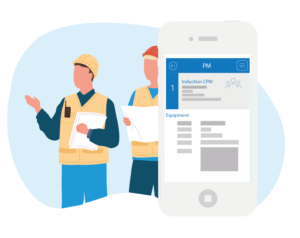Rent Collection in Affordable Housing Continues to Lag, Says Latest Report from MRI Software
Collection Rates Higher in Public Housing; Tenants Staying Put in Both Sectors
Solon, Ohio – September 17, 2020 – Rent collection in affordable housing continues to lag as the pandemic wears on, according to the latest report from Proptech firm MRI Software (“MRI”). Year-over-year collection rates in public housing remain comparatively high. Meanwhile, tenants in both sectors are staying in place.
MRI’s report compiles data from more than 1.5 million affordable and public housing units throughout the U.S. in January-August 2020 and January-August 2019. Analysis comprises both year-over-year and month-over-month comparisons.
Highlights of the findings include:
- Rent collection in affordable housing in August 2020 reached only 77% of 2019 levels. The July 2020 rate was 76% of July 2019.
- The rates of rent collection in August 2020 remained relatively strong in public housing, at 94% of August 2019 levels. July 2020’s percentage was 96% of July 2019.
- Tenants are staying in place. Applications, new admission certifications, and move-out certifications in August 2020 were low compared to August 2019. The same was true of July 2020 compared to July 2019.
Brian Zrimsek, Industry Principal at MRI Software, attributes the divergence between rent collection rates in affordable and public housing to the deeper rental subsidies provided in public housing. A wide range of factors will determine whether the collection rates in affordable housing improve: Among them are governmental assistance, vaccine availability, virus control, unemployment, and reopening.
One factor contributing to tenant stasis is lockdowns, especially in larger urban areas, where many affordable and public housing sites are located. Zrimsek notes, however, that applications and moves are down not only in affordable and public housing, but also in conventional housing. “If economic pressures persist across asset classes, we could see increased demand for affordable and public housing from tenants now in market-rate housing and even from homeowners,” he says.
In Zrimsek’s view, there is one certainty amid all of the uncertainty: “The demand for affordable housing will not abate.”
MRI will present the report’s findings in detail during a webinar on September 22 at 2:00pm EDT.
About MRI Software
MRI Software is a leading provider of innovative real estate software applications and hosted solutions. MRI’s comprehensive and flexible technology platform coupled with an open and connected ecosystem meets the unique needs of real estate businesses – from property-level management and accounting to investment modelling and analytics for the global commercial and residential markets. A pioneer of the real estate software industry, MRI develops lasting client relationships based on nearly five decades of expertise and insight. Through leading solutions and a rich partner ecosystem, MRI gives organizations the freedom to transform the way communities live, work and play while elevating their business and gaining a competitive edge. For more information, please visit mrisoftware.com.
MEDIA CONTACTS:
(U.S. for MRI)
Rachel Antman (+1 212-362-5837)
rachel@saygency.com
(U.K.) Platform Communications for MRI
PJ Chou (+44 20 3219 5837)
Zoe Mumba (+44 7725 832393)
or Hugh Filman (+44 7905 044850)
mri@platformcomms.com
Affordable Housing Asset Manager Insights: Maximize Portfolio Performance by Supporting Housing Operators
From rising operational costs to increased demand for flexibility and technology, asset managers are navigating unique challenges to support property management teams while ensuring portfolio health and resilience. Recent MRI research delves into the…

